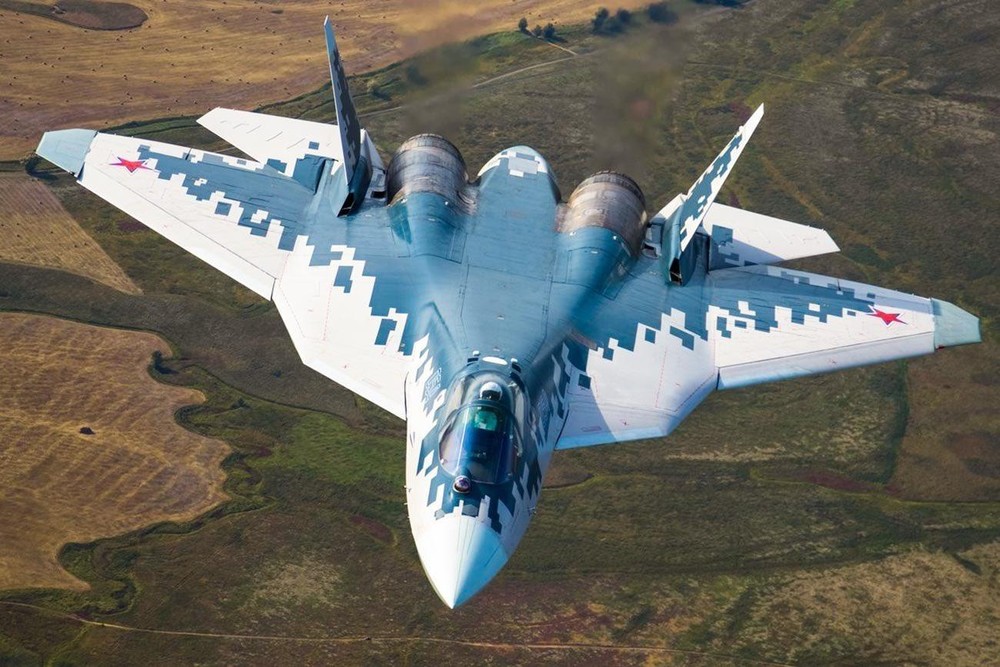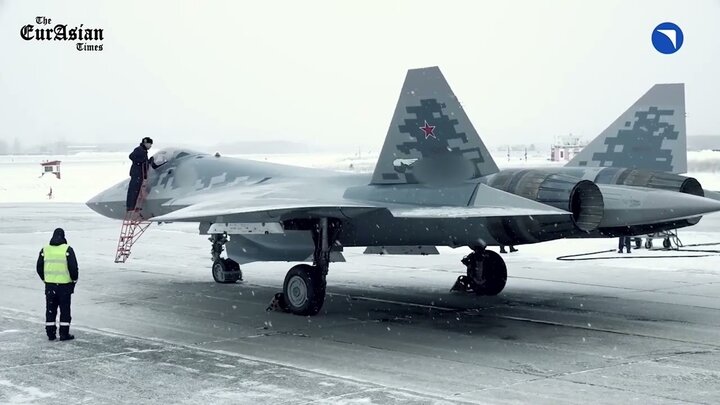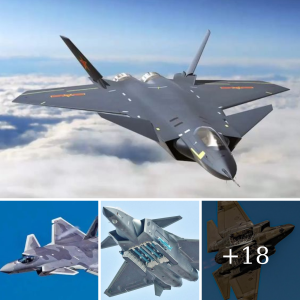The Sukhoi Su-57, Russia’s flagship fifth-generation stealth fighter jet, stands as a symbol of the country’s technological advancements in military aviation. Designed by the famed Sukhoi company, the Su-57 is often compared to other fifth-generation jets such as the U.S. F-22 Raptor and F-35 Lightning II. It was developed to fulfill a variety of roles, including air superiority, ground attack, and advanced reconnaissance, showcasing Russia’s ambitions to compete with the most advanced aircraft in the world.

A Revolutionary Design
The Su-57’s design marks a significant leap forward for Russian aviation. One of its standout features is its stealth capability. While Russian fighter jets have traditionally prioritized speed and maneuverability over stealth, the Su-57 aims to challenge that norm. The jet’s airframe is shaped to reduce its radar cross-section, making it harder to detect by enemy radar systems. Although its stealth capabilities are still debated, the aircraft incorporates stealthy design principles in both its shape and the use of composite materials.
The aircraft also boasts cutting-edge avionics, sensors, and weapons systems. The Su-57 is equipped with an advanced integrated avionics suite that fuses data from various sensors to provide the pilot with real-time situational awareness. This system allows the pilot to track and engage multiple targets simultaneously, a critical capability in modern air combat.

Speed and Maneuverability: A Fighter’s Best Friend
Speed and maneuverability are where the Su-57 truly shines. The jet is powered by two powerful engines, which give it supercruise capability — the ability to fly at supersonic speeds without using afterburners. This allows the Su-57 to maintain high speeds during combat while conserving fuel. The current model is powered by the AL-41F1 engine, though Russia plans to upgrade it with the more advanced Izdeliye 30 engines, which will further enhance its performance.
In addition to its speed, the Su-57 is designed to be highly maneuverable. Its unique thrust-vectoring nozzles allow the jet to perform advanced aerial maneuvers that would be impossible for most other fighters. This maneuverability is critical in dogfights, where outmaneuvering an opponent can be the difference between life and death.
Armament: A Formidable Arsenal
The Su-57 is built to carry an impressive array of weapons, both for air-to-air and air-to-ground combat. It has six internal weapons bays to preserve its stealth profile, as well as external hardpoints for additional armaments when stealth is not a priority. The fighter is equipped with a range of advanced missiles, including the R-77 medium-range air-to-air missile and the K-77M, which is designed for long-range engagements.
For ground attack missions, the Su-57 can carry precision-guided bombs and air-to-surface missiles, making it a versatile platform that can engage targets both in the air and on the ground. The fighter is also expected to carry hypersonic missiles in the future, further enhancing its ability to strike targets with unprecedented speed.
Stealth Capabilities: The Great Debate
One of the most discussed aspects of the Su-57 is its stealth capabilities. Western analysts have often compared its stealth profile to that of the F-22 and F-35, generally concluding that the Su-57’s stealth is less effective. However, Russian engineers argue that the Su-57’s stealth is more than sufficient for its intended purposes, particularly when combined with its speed, sensors, and electronic warfare systems.
Rather than solely relying on stealth to avoid detection, the Su-57 employs a combination of tactics, including electronic countermeasures (ECM) and advanced jamming systems. These systems allow the fighter to deceive enemy radar and make it harder to lock onto. Russian military doctrine also emphasizes that stealth alone is not the defining factor in air combat — speed, agility, and firepower are equally important, and the Su-57 excels in these areas.
Comparisons to Western Counterparts
The Su-57 is often compared to the U.S. F-22 Raptor and F-35 Lightning II. The F-22, known for its stealth and unmatched aerial combat capabilities, is often considered the gold standard of fifth-generation fighters. The F-35, while not as fast or agile as the F-22, is a multi-role fighter known for its advanced sensors and network-centric warfare capabilities.
While the Su-57 may not match the F-22 in terms of stealth, it surpasses both American fighters in terms of maneuverability and supercruise capabilities. Additionally, Russia has placed significant emphasis on the Su-57’s ability to perform well in electronic warfare, a crucial domain in modern combat. In terms of cost, the Su-57 is also expected to be less expensive than its Western counterparts, offering a more budget-friendly option for countries seeking fifth-generation fighters.
Challenges and Future Prospects
Despite its impressive capabilities, the Su-57 has faced challenges during its development. Initially delayed due to funding issues and technical setbacks, the aircraft’s full-scale production was postponed several times. Nevertheless, the first production Su-57s have been delivered to the Russian Air Force, and the program is now gaining momentum.
Looking ahead, Russia aims to produce at least 76 Su-57s by 2028. Additionally, Russia is exploring export opportunities, with countries such as India expressing interest in the fighter. The Su-57 is also expected to receive significant upgrades in the coming years, including the aforementioned Izdeliye 30 engines and the integration of hypersonic weapons.
Conclusion: The Su-57’s Place in Modern Warfare
The Sukhoi Su-57 represents a bold step forward for Russian aviation. With its combination of stealth, speed, maneuverability, and firepower, it is a formidable adversary in the skies. While it may not match its Western counterparts in stealth, the Su-57’s versatility and advanced systems make it a valuable asset for the Russian military.
As it continues to evolve, the Su-57 will undoubtedly play a key role in shaping the future of air combat. Whether it’s dominating the skies in dogfights or conducting precision strikes on ground targets, the Su-57 has the potential to redefine Russia’s air power in the coming decades.





